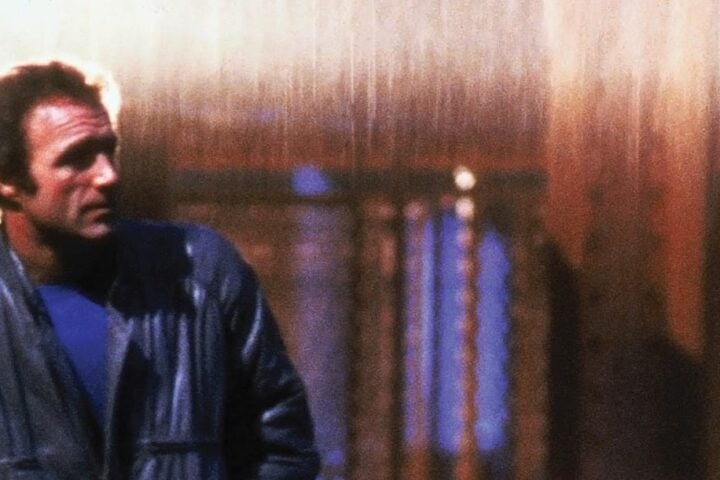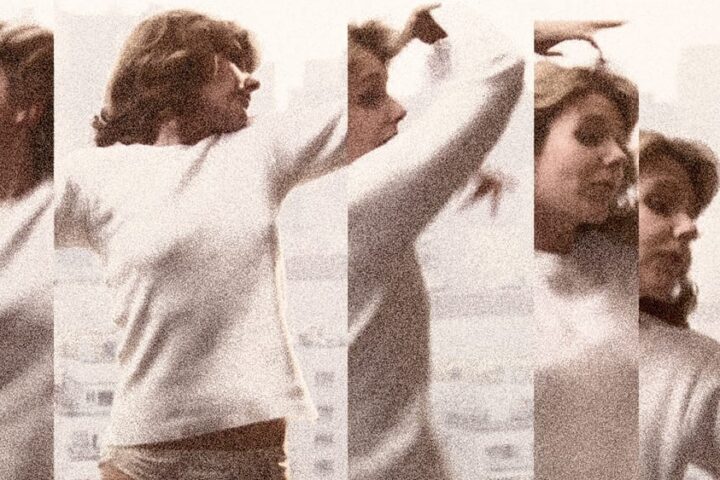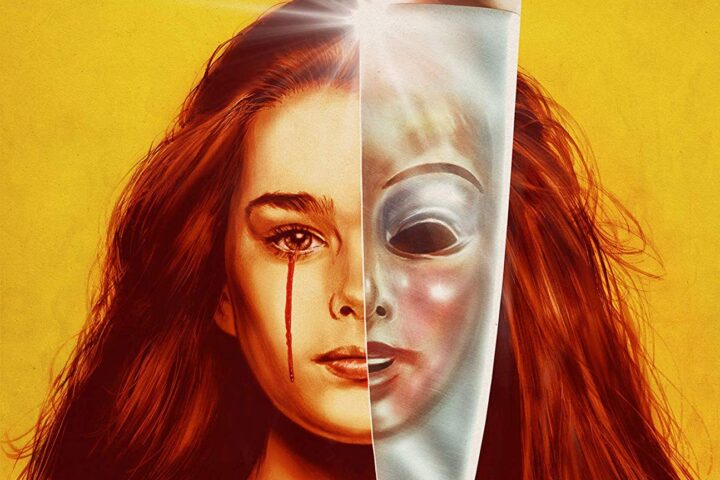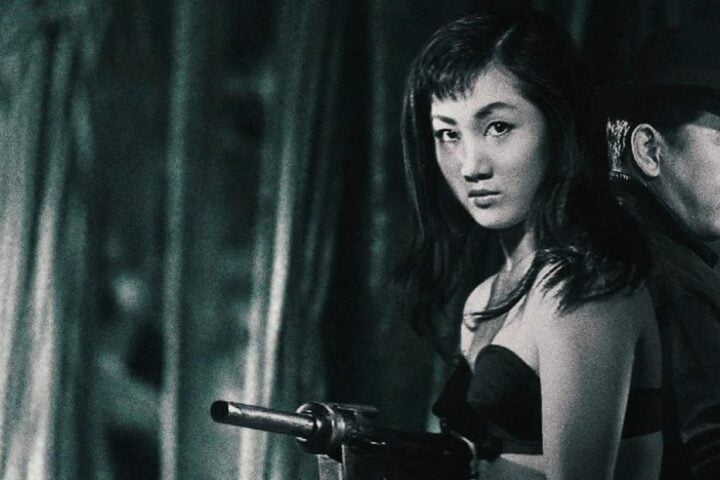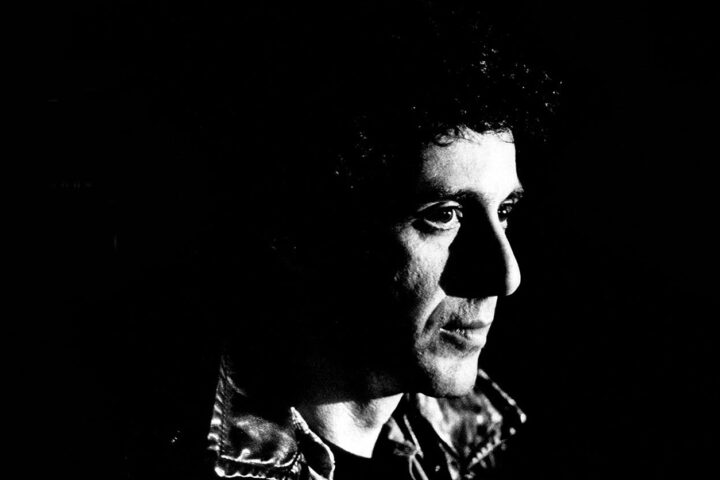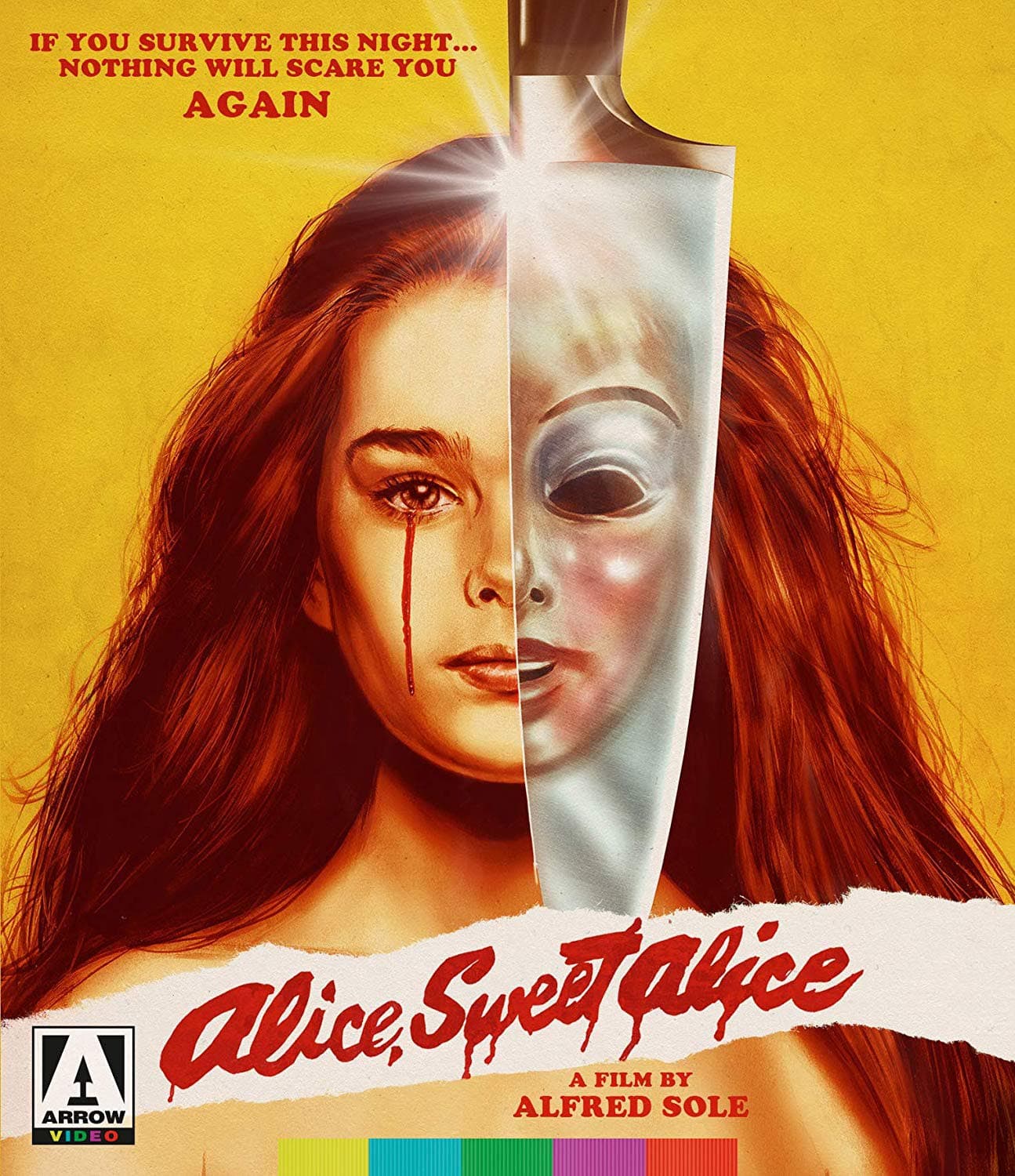 Alfred Sole’s Alice, Sweet Alice opens with young Karen (Brooke Shields) preparing for her first communion. Her mother, Catherine (Linda Miller), and the well-meaning Father Tom (Rudolph Willrich) are so excited for her that they overlook the crazed behavior of the girl’s sister, Alice (Paula E. Sheppard). After starting to wear a yellow raincoat (an obvious nod to Don’t Look Now) and a translucent mask that suggests a smiling albino face decked out in garish makeup, Alice bullies Karen, stealing her clothes and toys and leading her to a warehouse and briefly locking her behind a sliding door.
Alfred Sole’s Alice, Sweet Alice opens with young Karen (Brooke Shields) preparing for her first communion. Her mother, Catherine (Linda Miller), and the well-meaning Father Tom (Rudolph Willrich) are so excited for her that they overlook the crazed behavior of the girl’s sister, Alice (Paula E. Sheppard). After starting to wear a yellow raincoat (an obvious nod to Don’t Look Now) and a translucent mask that suggests a smiling albino face decked out in garish makeup, Alice bullies Karen, stealing her clothes and toys and leading her to a warehouse and briefly locking her behind a sliding door.
Throughout these episodes, Sole focuses on crosses, statues, and a creepy Janus-faced doll, emphasizing the violence festering under a righteous community’s nose, as well as a split between tolerance, especially of more modern relationships, and wrath and judgment in the key of the Old Testament. This is a film that conjures a stifling atmosphere, one in which strained institutions, like the ideologically divided Catholic Church, are unable to help diseased minds.
As other critics have claimed, the term “slasher film” is inadequate to describe Alice, Sweet Alice, which shows murders to spring from a patchwork of motivations and tensions. Karen is strangled at her communion by a diminutive person in a yellow raincoat and translucent mask—a scene that Sole stages with an intimate yet offhand quality that’s authentically shocking. One can hear the sounds of the communion, a theoretical bastion of safety, as the life is squeezed out of the girl, as well as feel the ease with which the killer commits this trespass.
The church is rarely filmed in the sort of master shots that might inspire feelings of grandeur, as Sole favors cramped medium shots and close-ups that induce a sense of claustrophobia. The characters always appear to be cramped together in the church, on top of one another, and their homes are composed of similarly small passageways. One of the most vivid of Alice, Sweet Alice’s settings is a pea-green angular stairway that suggests something out of a German Expressionist film, with neighbors who always seem to be within earshot.
Alice is naturally suspected of Karen’s murder, though Catherine, in denial about the hostile relationship between her daughters, remains oblivious to Alice’s predatory tendencies. This willed ignorance is partially understood by Sole to be a reaction to Catherine’s sister, Annie (Jane Lowry), an uptight shrew who treats Alice with contempt, and who resents that Catherine went against the church and had Alice out of wedlock with her now ex-husband, Dom (Niles McMaster), who returns to town to investigate the mystery of Karen’s death.
Sole allows these reverberations, particularly the parallel bitterness existing between Catherine and Annie and Karen and Alice, both of which have been intensified by religion, to gradually assert themselves into our minds. Yet Alice, Sweet Alice isn’t exactly an indictment of the church, as Catherine and Dom’s splintered relationship is also portrayed as a gateway to chaos, primarily for Catherine’s distracted nature and unwillingness to face the truth of her family. For instance, a pathologist (Lillian Roth) virtually begs Catherine to keep Alice in therapy to little avail, especially after Alice claims the killer, after another attack, to be Karen.
Sole paints a rich and febrile portrait, then, of how society enables dysfunction on multiple fronts, from the domestic to the religious to the psychiatric. (The police are shown to be restorers of order, though they serve that function almost inadvertently.) The filmmaker also invests his narrative with references to classic horror films, most notably Psycho, though his own direction lacks Alfred Hitchcock’s polish, which in this case is a blessing.
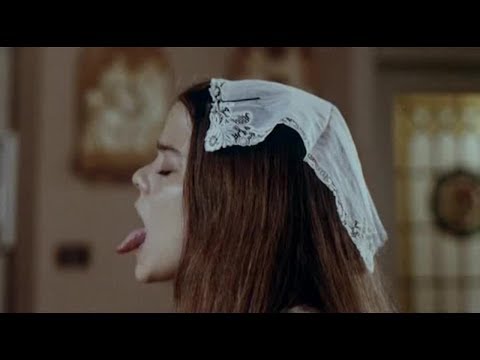
In the film’s best sequences, particularly the moments following Karen’s murder, Sole allows for tonal inconsistencies that reflect the true shock of violence. In such instances, Alice, Sweet Alice turns momentarily shrill, with actors screeching their lines almost directly to the camera—a device that expresses pain and refutes the fashions with which many horror directors rush through the grief process haphazardly in order to move the narrative along.
In other moments, though, Sole’s directorial control is magisterial. Annie’s near murder, when she’s stabbed on the stairway, is framed in a prismatic image, with a mirror reflecting the assault back on itself and suggesting, once again, the intense insularity of this world. (Other such images show characters nearly encased by religious totems.) Later, as Dom is taunted by Karen’s killer, Sole fashions a close-up of a face wearing the mask, looking at Dom from a higher vantage point. Sole lingers on the eyes behind the mask, which are gleaming with fury and, more disturbingly, a kind of grace that might come from acting on and expunging one’s suppressed emotions. In this scene, the mask becomes a symbol for the failures of all the infrastructures under this remarkable film’s purview, as this object also fails to efface insanity.
Image/Sound
The new 4K restoration by Arrow from the original camera negative is positively gorgeous. The autumnal colors that dominate the film’s palette have a rich earthy presence, while other hues—such as the red of spilled blood and the green of the hideous stairwell—pop luridly off the screen. Most importantly, every color here has a highly differentiated presence that stands in stark contrast to muddier prior presentations of the film, which should hopefully increase awareness of the film’s artistry. Meanwhile, grain textures are healthy and appealing, though image clarity is also superb, which is to say that the film looks vibrant yet evocatively lived-in at the same time. The monaural soundtrack is also dynamic, rendering a wide spectrum of diegetic sounds—running, stabbing, door slamming—with dimension and body, while also affording Stephen Lawrence’s eerily airy score the prominence it deserves.
Extras
All of the extras here appeared on Arrow’s 2019 Blu-ray release of Alfred Sole’s film. A commentary with writer Richard Harland Smith offers an engaging deep dive into the symbolism of Alice, Sweet Alice. Smith discusses with particular acuity the film’s understanding of the hidden worlds that children foster, and how these worlds parallel those of the adults. (One example is Alice’s suggestively satanic version of a confession booth.) He also provides considerable biographical information on the film’s participants, which is complemented by the archival commentary by Sole and editor M. Edward Salier. Sole generously cites the contributions of his collaborators, especially Salier, whom he says “saved him” by helping to fashion suspenseful rhythms from his footage.
Elsewhere, several interviews—with composer Stephen Lawrence, actor Niles McMaster, Sole, and others—offer updated discussions of the film, which is also known as Communion, as well as alternate views of its making and its storied release pattern. Another interview, with horror filmmaker Dante Tomaselli (Satan’s Playground), is a more personal affair, as Tomaselli is Sole’s younger cousin, who remembers soliciting the older man for advice on his own scripts, which now include an in-the-works remake of Alice, Sweet Alice.
Other goodies include deleted scenes, a tour of film’s shooting locations, TV spots, the trailer, alternate opening titles, and even an alternate cut of the film, titled Holy Terror, featuring different footage. Rounding out a very extensive package is a miniature version of the film’s poster, and a booklet featuring an essay by Michael Blyth that places Alice, Sweet Alice in the context of the giallo, the blossoming American slasher film, and exorcism narratives.
Overall
With its beautiful 4K restoration, Arrow Video further cements Alice, Sweet Alice’s reputation as one of the greatest horror films of the 1970s.
Since 2001, we've brought you uncompromising, candid takes on the world of film, music, television, video games, theater, and more. Independently owned and operated publications like Slant have been hit hard in recent years, but we’re committed to keeping our content free and accessible—meaning no paywalls or fees.
If you like what we do, please consider subscribing to our Patreon or making a donation.

